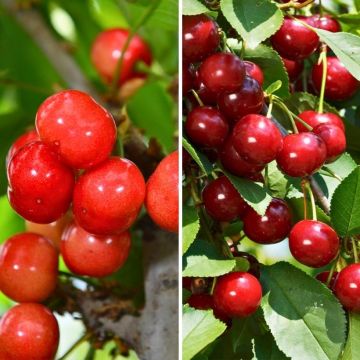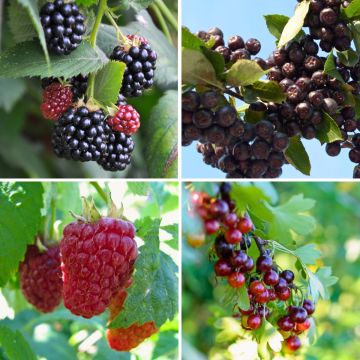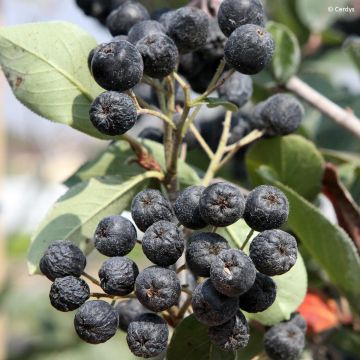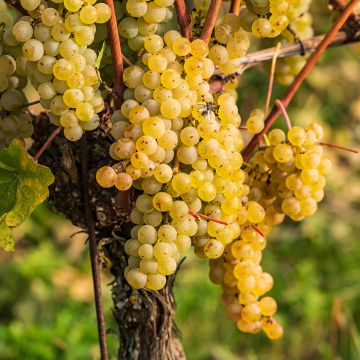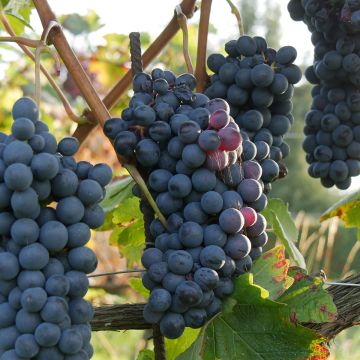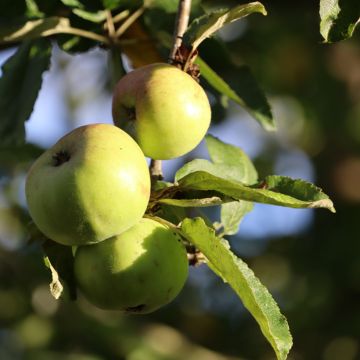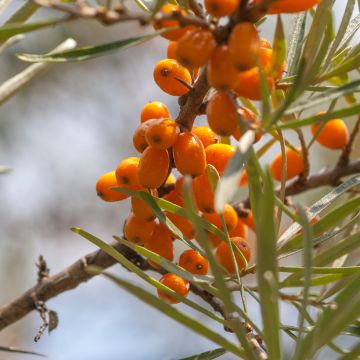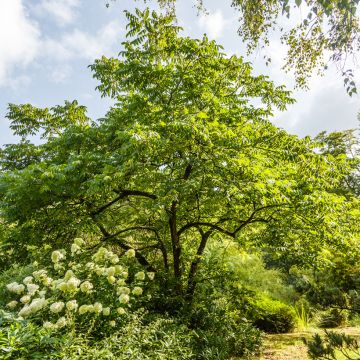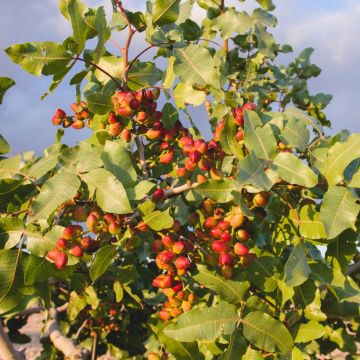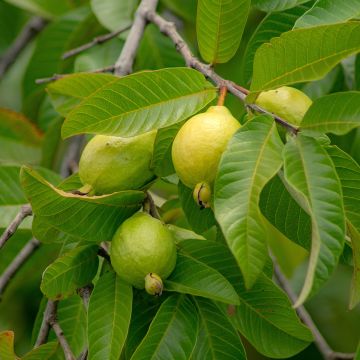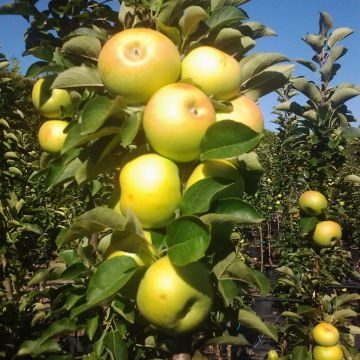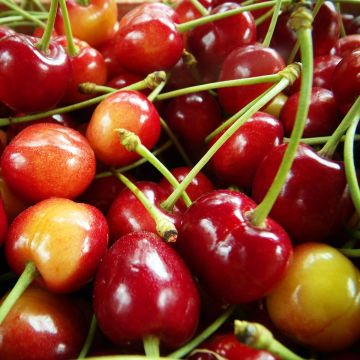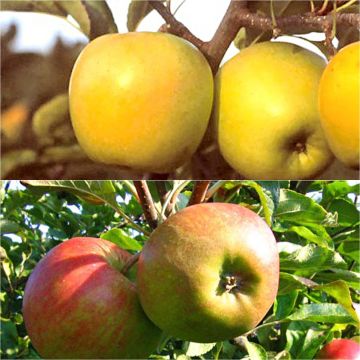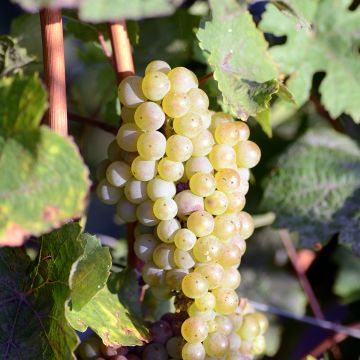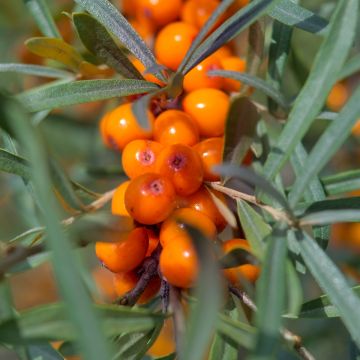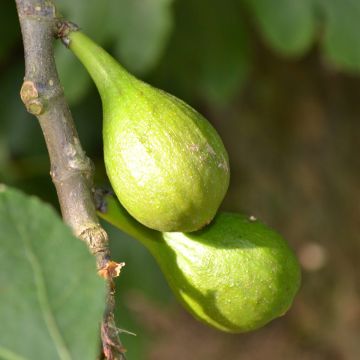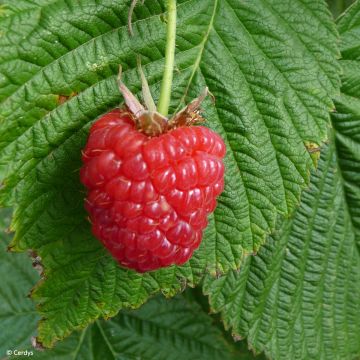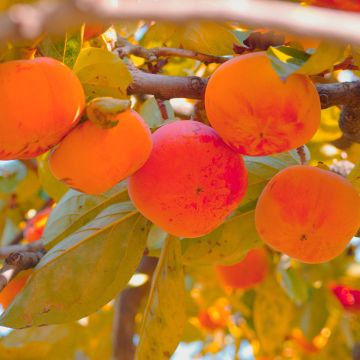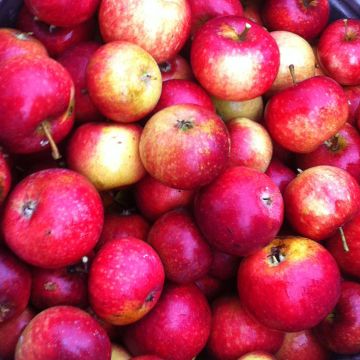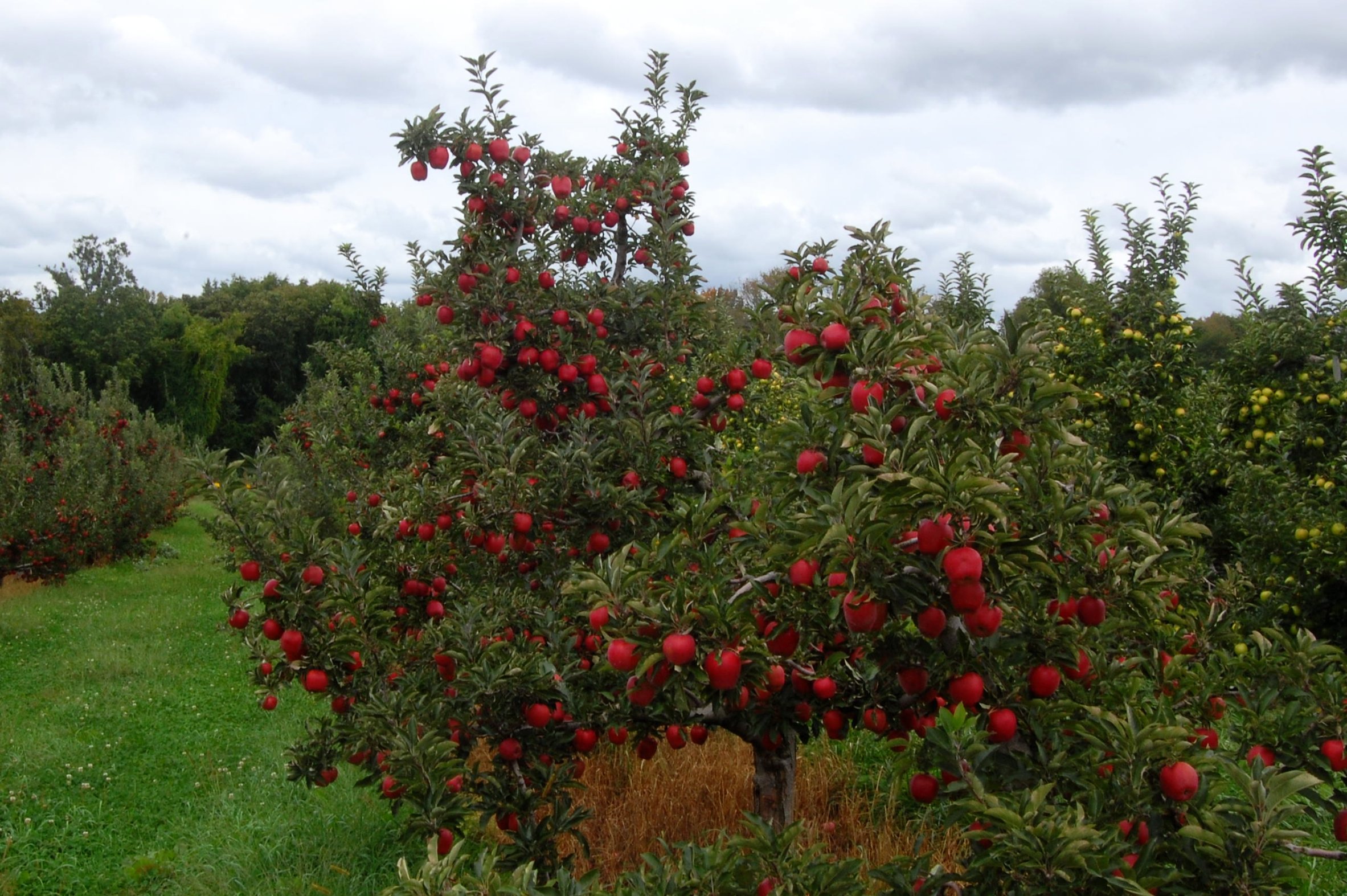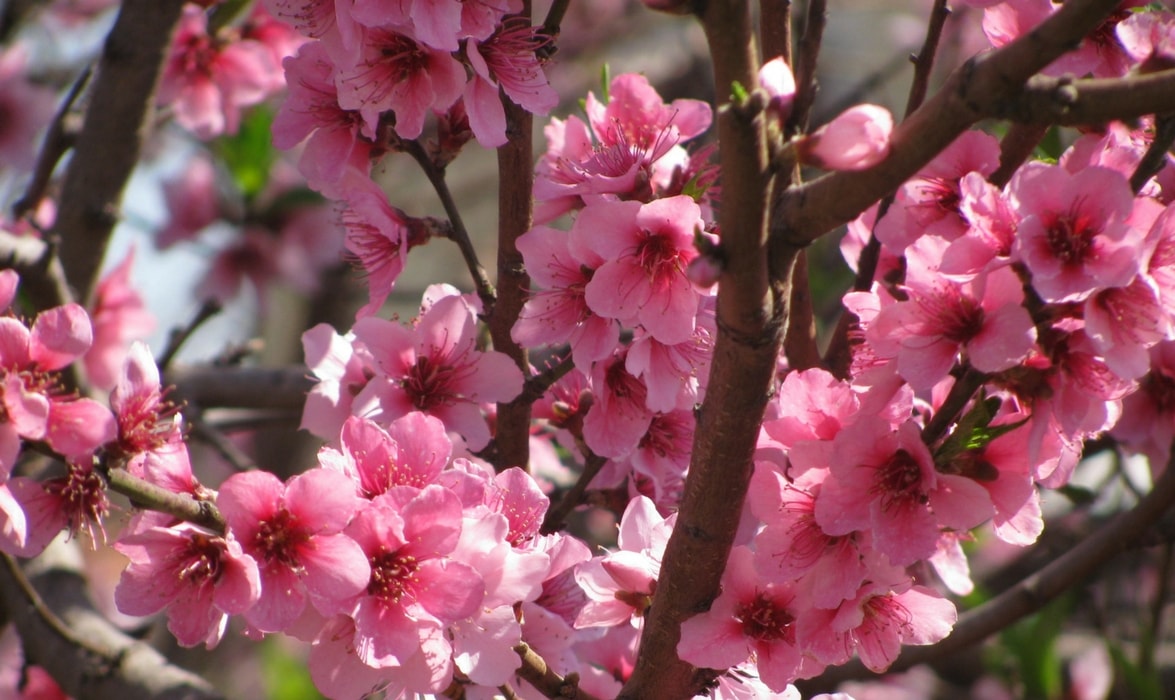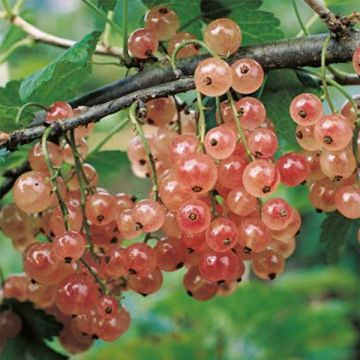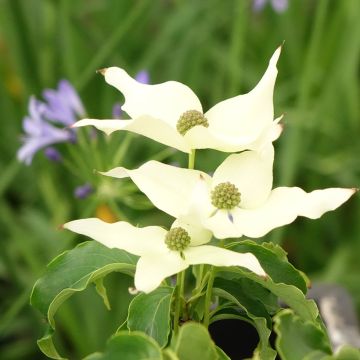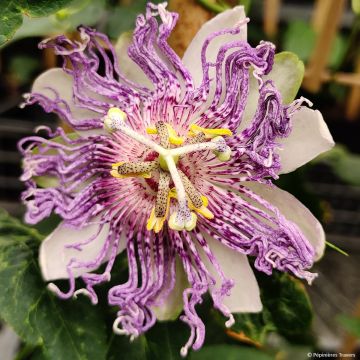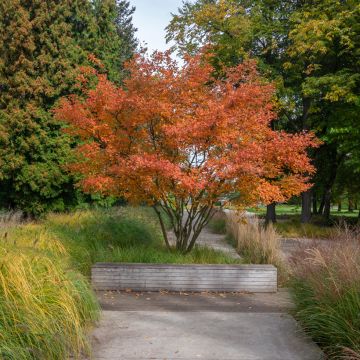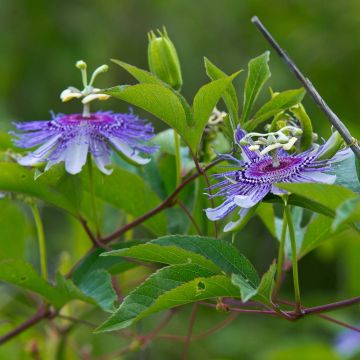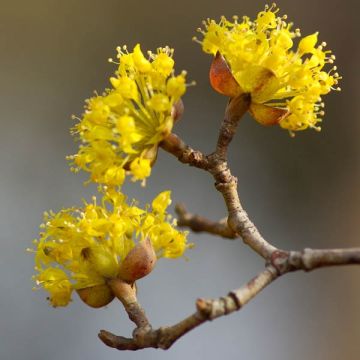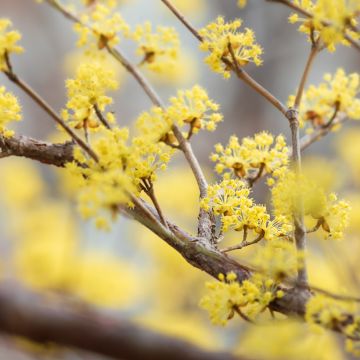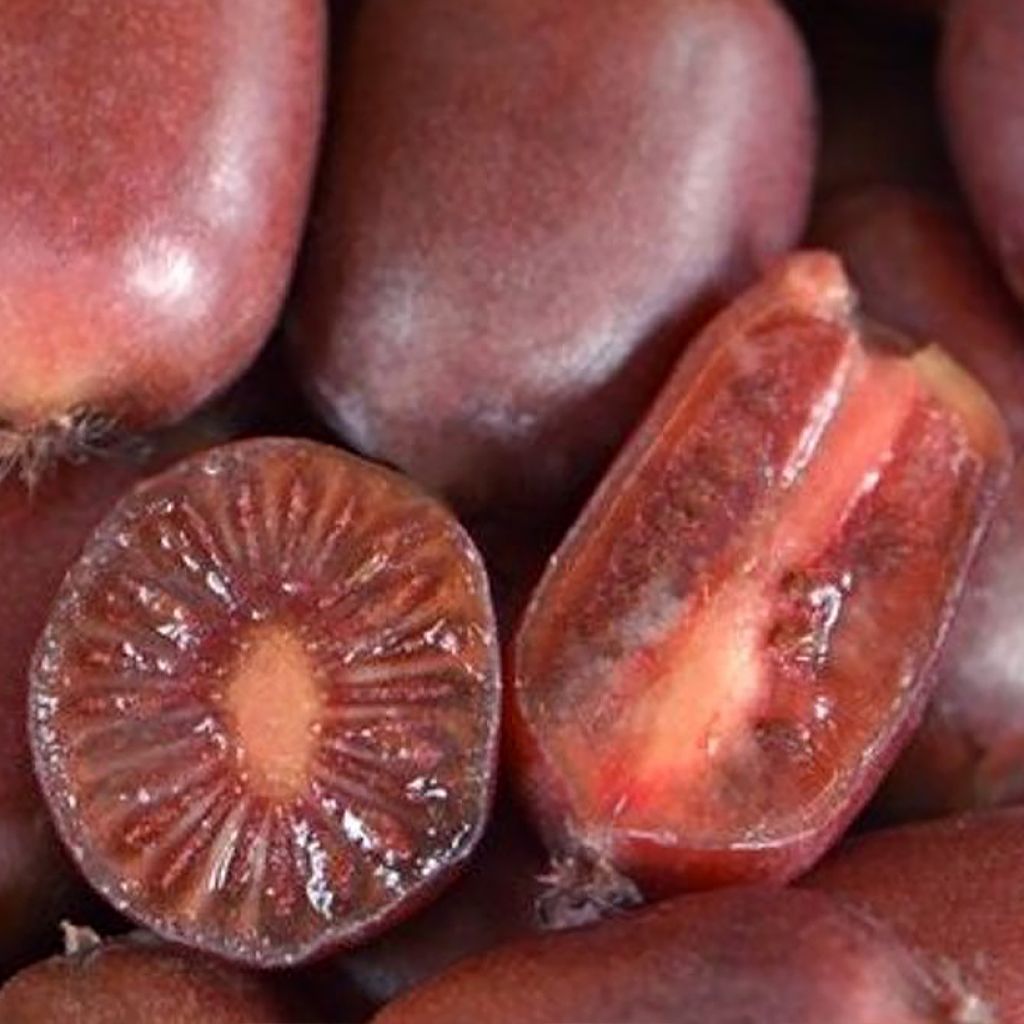

Hardy Kiwi Scarlet September (female) - Actinidia arguta
Hardy Kiwi Scarlet September (female) - Actinidia arguta
Actinidia aguta Scarlet September® ‘Mirzan’
Hardy Kiwi, Tara Vine, Kiwai, Kiwiberry, Grape Kiwi
Special offer!
Receive a €20 voucher for any order over €90 (excluding delivery costs, credit notes, and plastic-free options)!
1- Add your favorite plants to your cart.
2- Once you have reached €90, confirm your order (you can even choose the delivery date!).
3- As soon as your order is shipped, you will receive an email containing your voucher code, valid for 3 months (90 days).
Your voucher is unique and can only be used once, for any order with a minimum value of €20, excluding delivery costs.
Can be combined with other current offers, non-divisible and non-refundable.
Why not try an alternative variety in stock?
View all →This plant carries a 6 months recovery warranty
More information
We guarantee the quality of our plants for a full growing cycle, and will replace at our expense any plant that fails to recover under normal climatic and planting conditions.
Description
The Kiwi arguta 'Scarlet September' 'Mirzan' is a productive female Siberian Kiwi variety that bears fruit from late August to mid-September. Its extremely delicious and melting small fruits are ruby red in colour. A true delicacy, with a smooth and thin skin like a grape, they can be enjoyed whole. Their red flesh, juicy, sweet and with a mild flavour, surprises with its pleasant strawberry taste. This female variety requires the presence of a male plant nearby for pollination. The voluble branches of the kiwis need support: trellis, pergola, arbor or stretched wires. Planting is recommended in autumn or spring for regions with cold winters.
In the Kiwi category, we find the Ornamental Kiwi (Actinidia kolomikta), the Kiwi (Actinidia chinensis or deliciosa) with a fuzzy skin, and the Kiwaï (Actinidia arguta) with a smooth skin also known as Siberian Kiwi or Summer Kiwi. All three belong to the Actinidiaceae family. Selected by Mirosław Zaniewski, the Kiwi arguta 'Scarlet September' is a new Polish cultivar that produces long voluble branches that can reach 4 to 6 m (13 to 20ft) in length. Very hardy to -25°C. Deciduous foliage. The branches bear 8 to 10 cm (3 to 4in) long, heart-shaped green leaves. In June-July, fragrant and honey-bearing flowers appear at the axils of the leaves, creamy white in colour with purple anthers, grouped in threes.
The 'Scarlet September' fruits measure 2 to 3 cm (1in) in diameter and 3 to 4 cm (1 to 2in) in length. They reach ripeness from late August to mid-September. They can be stored for one to two weeks after harvesting. Its red, sweet, fragrant flesh resembles the taste of strawberries. It is rich in calcium and vitamin C. It can be consumed whole. Fruiting begins 2 to 3 years after planting. The Scarlet September kiwi arguta (female) is not a self-fertile variety, so it needs a male plant nearby. The kiwi arguta 'Weikii' (male) will be an excellent pollinator. Like the Kiwi, one male plant can fertilise 4 to 5 female plants.
In addition to its fruit qualities, the Kiwaï's lush foliage, fragrant flowers, and generous branches provide ornamental use and utility in the garden. This plant needs to be trained on a strong support such as stretched wires on a support, a trellis, an arbor, a pergola, or a fence. It prefers a light, fresh, non-calcareous soil and a sunny exposure.
The fruits of the Kiwi arguta 'Scarlet September' (female) are harvested from September to October. It is pleasant to consume and enjoy the fruits in the garden. They can also be stored very well for about two weeks in the refrigerator. The production can reach up to 40 to 50 kg per plant. The Kiwaï can be consumed fresh, its flavour is refreshing and melting, a true delight. It can be enjoyed in tarts, fruit salads, dairy desserts, jams, jellies, compotes, fruit juice, and cocktails. As a sweet vegetable, it can tenderly accompany white meat dishes (poultry, veal, pork, etc.).
Report an error about the product description
Plant habit
Fruit
Flowering
Foliage
Botanical data
Actinidia
aguta
Scarlet September® ‘Mirzan’
Actinidiaceae
Hardy Kiwi, Tara Vine, Kiwai, Kiwiberry, Grape Kiwi
Cultivar or hybrid
Other Fruit trees A to Z
View all →Planting and care
The 'Scarlet September' kiwai will be planted in a fresh, rich, light and well-drained soil. The plant dreads stagnant humidity and limestone. Install it in a sunny position sheltered from strong winds. Dig a hole 50 cm (20in) in all directions. Spread a layer of gravel at the bottom and then a layer of soil mixed with compost. Lay the root ball diagonally and bring the stems vertically along the support. Backfill with the same mixture. Provide it with support to help its voluble branches climb. Add half a watering can of water. The kiwi has trailing roots that develop horizontally under the surface of the soil. The soil must stay fresh in summer, so it will be useful to mulch the base with a layer of 10 to 15 cm (4 to 6in). Mulching is doubly useful as it prevents the germination of weeds and reduces water evaporation from the soil surface, allowing for reduced water input during the summer.
This kiwai requires little maintenance, simply provide regular watering. During periods of high heat, water it 1 to 2 times a week. Once established and rooted, the plant can fend for itself and becomes less water-hungry. Apply a fertiliser rich in crushed horn at the start of the new growing season. A special fruit tree fertiliser will also be very beneficial during the flowering period.
Not very susceptible to insects and pests, the Actinidia arguta 'Scarlet September' can nevertheless be affected by red spiders in a hot and dry environment. To eliminate them, you can lightly and regularly spray water on the foliage and soil.
Planting period
Intended location
Care
Planting & care advice
This item has not been reviewed yet - be the first to leave a review about it.
Similar products
Haven't found what you were looking for?
Hardiness is the lowest winter temperature a plant can endure without suffering serious damage or even dying. However, hardiness is affected by location (a sheltered area, such as a patio), protection (winter cover) and soil type (hardiness is improved by well-drained soil).

Photo Sharing Terms & Conditions
In order to encourage gardeners to interact and share their experiences, Promesse de fleurs offers various media enabling content to be uploaded onto its Site - in particular via the ‘Photo sharing’ module.
The User agrees to refrain from:
- Posting any content that is illegal, prejudicial, insulting, racist, inciteful to hatred, revisionist, contrary to public decency, that infringes on privacy or on the privacy rights of third parties, in particular the publicity rights of persons and goods, intellectual property rights, or the right to privacy.
- Submitting content on behalf of a third party;
- Impersonate the identity of a third party and/or publish any personal information about a third party;
In general, the User undertakes to refrain from any unethical behaviour.
All Content (in particular text, comments, files, images, photos, videos, creative works, etc.), which may be subject to property or intellectual property rights, image or other private rights, shall remain the property of the User, subject to the limited rights granted by the terms of the licence granted by Promesse de fleurs as stated below. Users are at liberty to publish or not to publish such Content on the Site, notably via the ‘Photo Sharing’ facility, and accept that this Content shall be made public and freely accessible, notably on the Internet.
Users further acknowledge, undertake to have ,and guarantee that they hold all necessary rights and permissions to publish such material on the Site, in particular with regard to the legislation in force pertaining to any privacy, property, intellectual property, image, or contractual rights, or rights of any other nature. By publishing such Content on the Site, Users acknowledge accepting full liability as publishers of the Content within the meaning of the law, and grant Promesse de fleurs, free of charge, an inclusive, worldwide licence for the said Content for the entire duration of its publication, including all reproduction, representation, up/downloading, displaying, performing, transmission, and storage rights.
Users also grant permission for their name to be linked to the Content and accept that this link may not always be made available.
By engaging in posting material, Users consent to their Content becoming automatically accessible on the Internet, in particular on other sites and/or blogs and/or web pages of the Promesse de fleurs site, including in particular social pages and the Promesse de fleurs catalogue.
Users may secure the removal of entrusted content free of charge by issuing a simple request via our contact form.
The flowering period indicated on our website applies to countries and regions located in USDA zone 8 (France, the United Kingdom, Ireland, the Netherlands, etc.)
It will vary according to where you live:
- In zones 9 to 10 (Italy, Spain, Greece, etc.), flowering will occur about 2 to 4 weeks earlier.
- In zones 6 to 7 (Germany, Poland, Slovenia, and lower mountainous regions), flowering will be delayed by 2 to 3 weeks.
- In zone 5 (Central Europe, Scandinavia), blooming will be delayed by 3 to 5 weeks.
In temperate climates, pruning of spring-flowering shrubs (forsythia, spireas, etc.) should be done just after flowering.
Pruning of summer-flowering shrubs (Indian Lilac, Perovskia, etc.) can be done in winter or spring.
In cold regions as well as with frost-sensitive plants, avoid pruning too early when severe frosts may still occur.
The planting period indicated on our website applies to countries and regions located in USDA zone 8 (France, United Kingdom, Ireland, Netherlands).
It will vary according to where you live:
- In Mediterranean zones (Marseille, Madrid, Milan, etc.), autumn and winter are the best planting periods.
- In continental zones (Strasbourg, Munich, Vienna, etc.), delay planting by 2 to 3 weeks in spring and bring it forward by 2 to 4 weeks in autumn.
- In mountainous regions (the Alps, Pyrenees, Carpathians, etc.), it is best to plant in late spring (May-June) or late summer (August-September).
The harvesting period indicated on our website applies to countries and regions in USDA zone 8 (France, England, Ireland, the Netherlands).
In colder areas (Scandinavia, Poland, Austria...) fruit and vegetable harvests are likely to be delayed by 3-4 weeks.
In warmer areas (Italy, Spain, Greece, etc.), harvesting will probably take place earlier, depending on weather conditions.
The sowing periods indicated on our website apply to countries and regions within USDA Zone 8 (France, UK, Ireland, Netherlands).
In colder areas (Scandinavia, Poland, Austria...), delay any outdoor sowing by 3-4 weeks, or sow under glass.
In warmer climes (Italy, Spain, Greece, etc.), bring outdoor sowing forward by a few weeks.






























